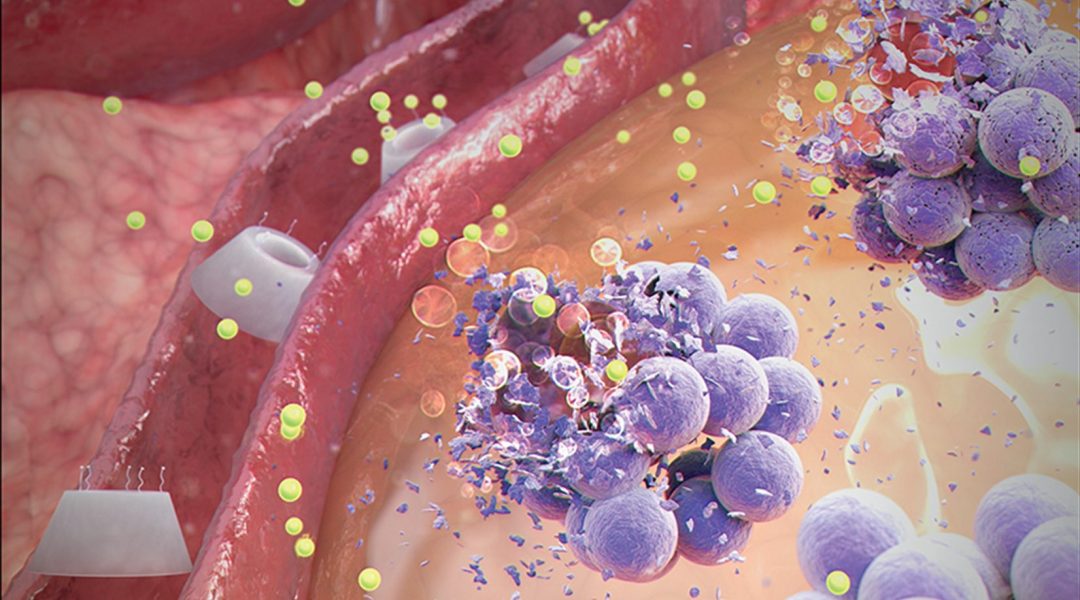Since 2012, Advanced Healthcare Materials has been bringing you the latest breakthroughs in biomedical materials science with a strong focus on improving human health, and it will continue to do so in 2019. We therefore have launched virtual issues on five hot topics in the field, where you can access some of our best recent papers free of charge!
In this monthly feature, we highlight the artwork and science behind both July issues of Advanced Healthcare Materials. You can find this month’s issues here and here. Click on the headers below to get to the corresponding papers.
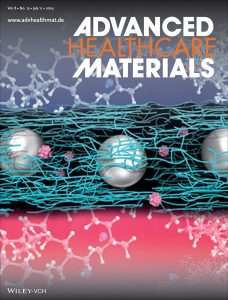
Hyperthermia Nanofiber Platform Synergized by Sustained Release of Paclitaxel to Improve Antitumor Efficiency
by Eri Niiyama, Koichiro Uto, Chan Man Lee, Kazuma Sakura, and Mitsuhiro Ebara
Mitsuhiro Ebara and co‐workers demonstrate the antitumor effect of a nanofiber mesh that can deliver both heat and antitumor drugs in a controlled manner. Magnetic particles embedded in the mesh generate heat when exposed to a magnetic field, and the biodegradable polycaprolactone mesh releases the chemotherapeutic drug paclitaxel for a prolonged drug release profile. This thermochemotherapy combination showed significantly enhanced antitumor activity in mouse cancer models, while the localized release of chemotherapeutic drugs reduced the toxic side effects.
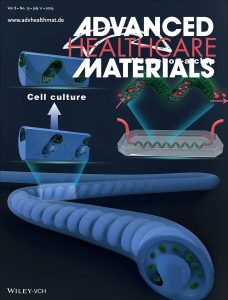
Microfluidic Fabrication of Biomimetic Helical Hydrogel Microfibers for Blood‐Vessel‐on‐a‐Chip Applications
by Luanluan Jia, Fengxuan Han, Huili Yang, Gareth Turnbull, Jiayuan Wang, Jon Clarke, Wenmiao Shu, Mingyu Guo, and Bin Li
Bin Li and co‐workers describe the synthesis of complex helical structures and cell‐laden hydrogel microfibers using microfluidics. Human umbilical vein endothelial cells (HUVECs) were able to grow on the inner wall of the hollow fibers and form a lumen similar to those found in natural blood vessels. Such cell‐laden microstructures may be used in blood vessel engineering, drug screening, and biological actuators.
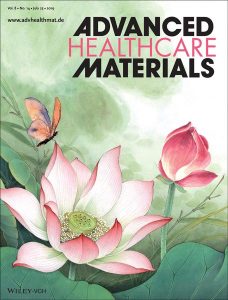
Injectable Cholesterol‐Enhanced Stereocomplex Polylactide Thermogel Loading Chondrocytes for Optimized Cartilage Regeneration
by Chenyu Wang, Naibo Feng, Jincheng Wang, Baoming Yuan, Yilong Cheng, He Liu, Jiakuo Yu, Jun Zou, Jianxun Ding, and Xuesi Chen
In cartilage tissue engineering, picking the right scaffold is key. Wang et al. designed a cholesterol-modified stereocomplex thermogel scaffold in order to create a microenvironment that fosters cartilage-producing chondrocytes. The inclusion of cholesterol in the scaffold improved the biomechanical properties, preserves the morphology, and promotes expression of cartilaginous genes.
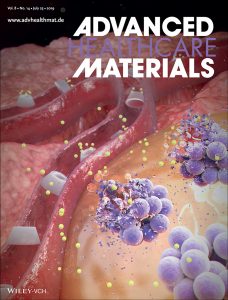
In Vitro and In Vivo Antimicrobial Activity of Antibiotic‐Conjugated Carriers with Rapid pH‐Responsive Release Kinetics
by Sunyoung Kang, Gee Ho Park, Seulah Kim, Jungah Kim, Yoonhwa Choi, Yan Huang, Yan Lee, and Tae Hyun Choi
A research team led by Yan Lee and Tae Hyun Choi from Seoul National University present a pH‐responsive antibiotic drug conjugate system using a maleic acid amide‐based linker. The conjugate system can rapidly release the antibiotics cephradine and moxifloxacin at pH 5.5. In mouse models of S. aureus infection, the conjugates displayed significantly improved antibacterial activity compared to standard treatments, even in weakly acidic environments such as those found in abscesses or inflammatory tissues.

